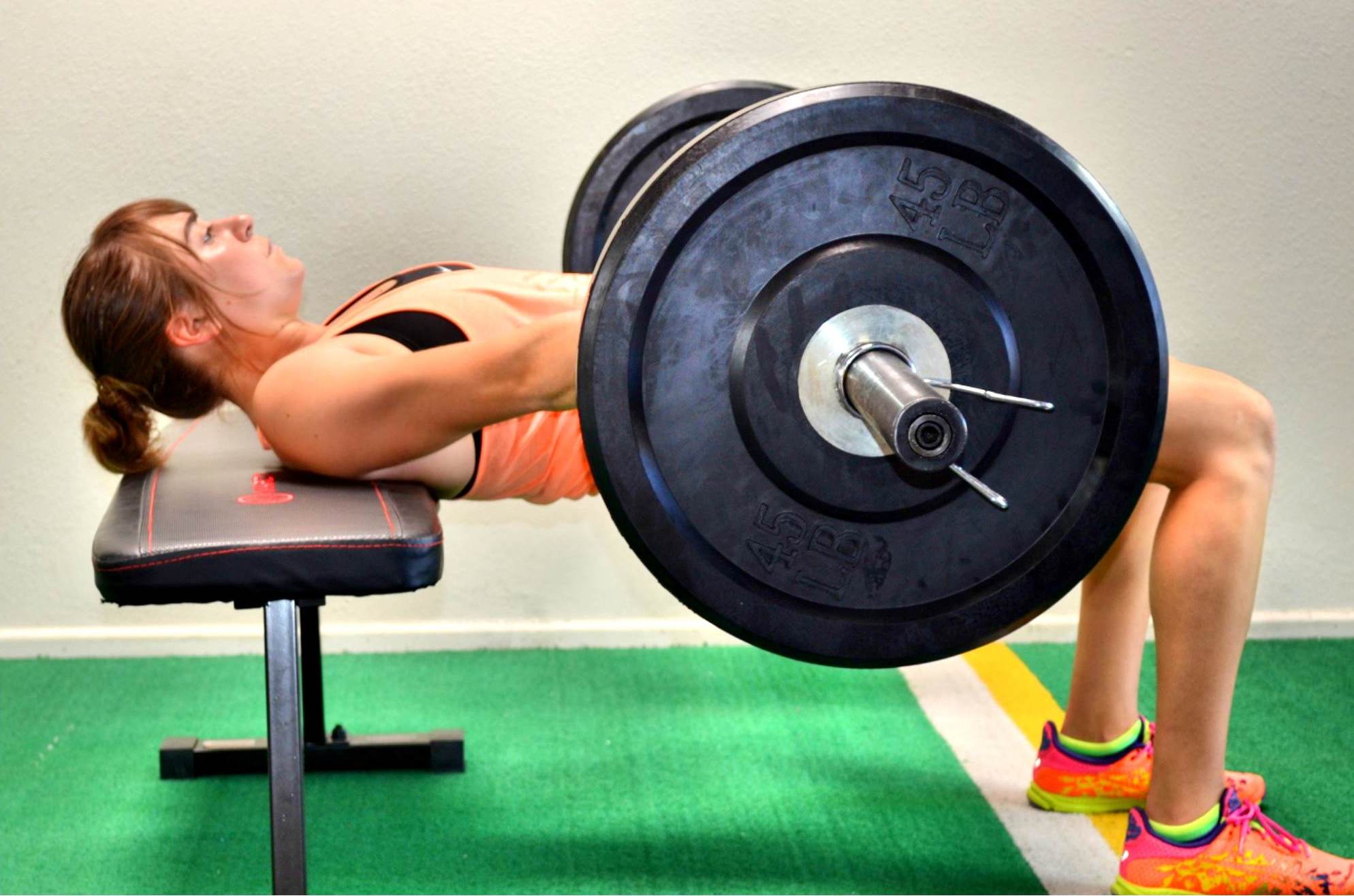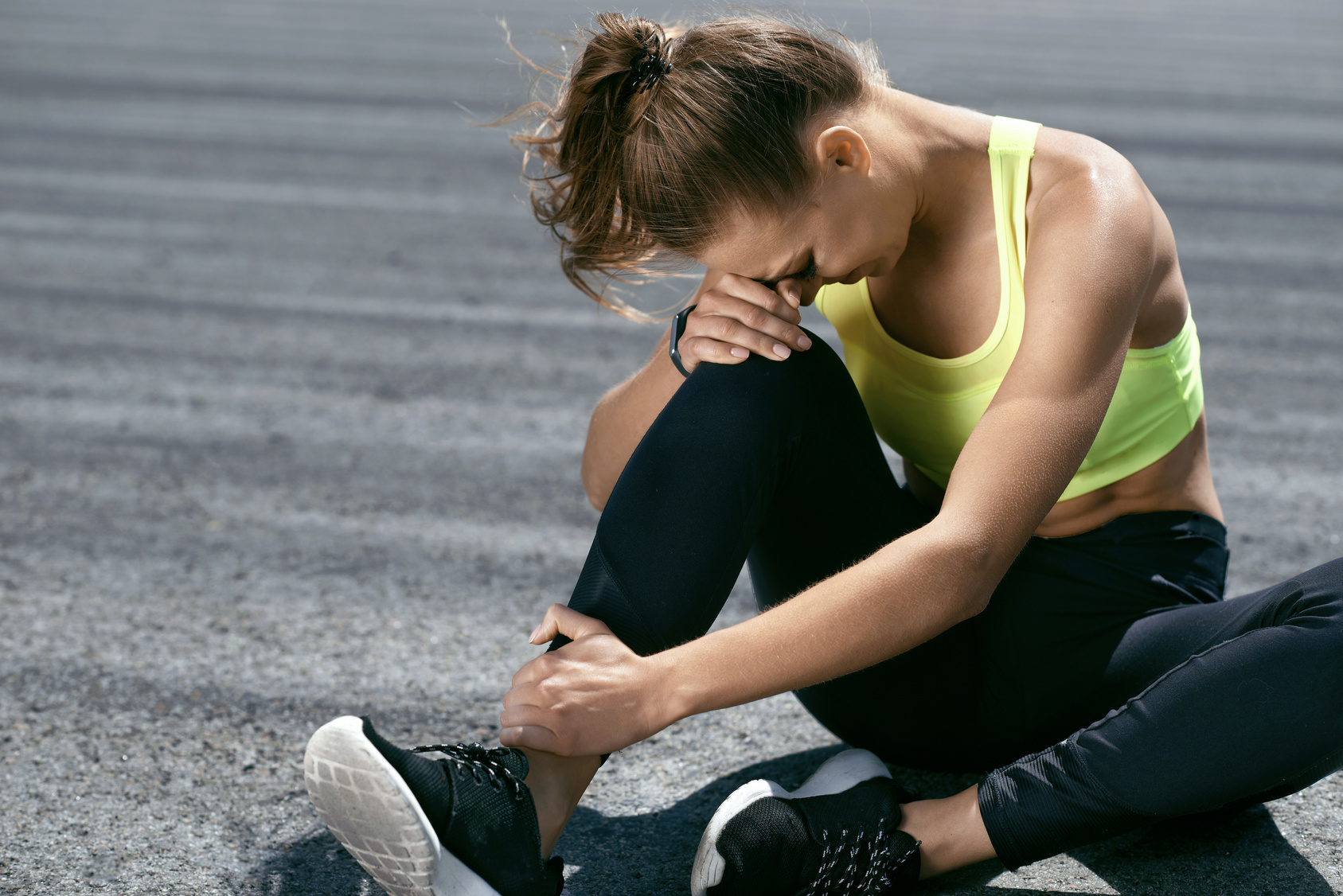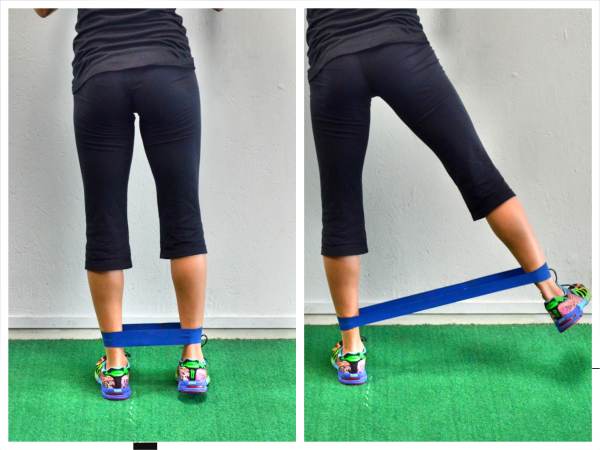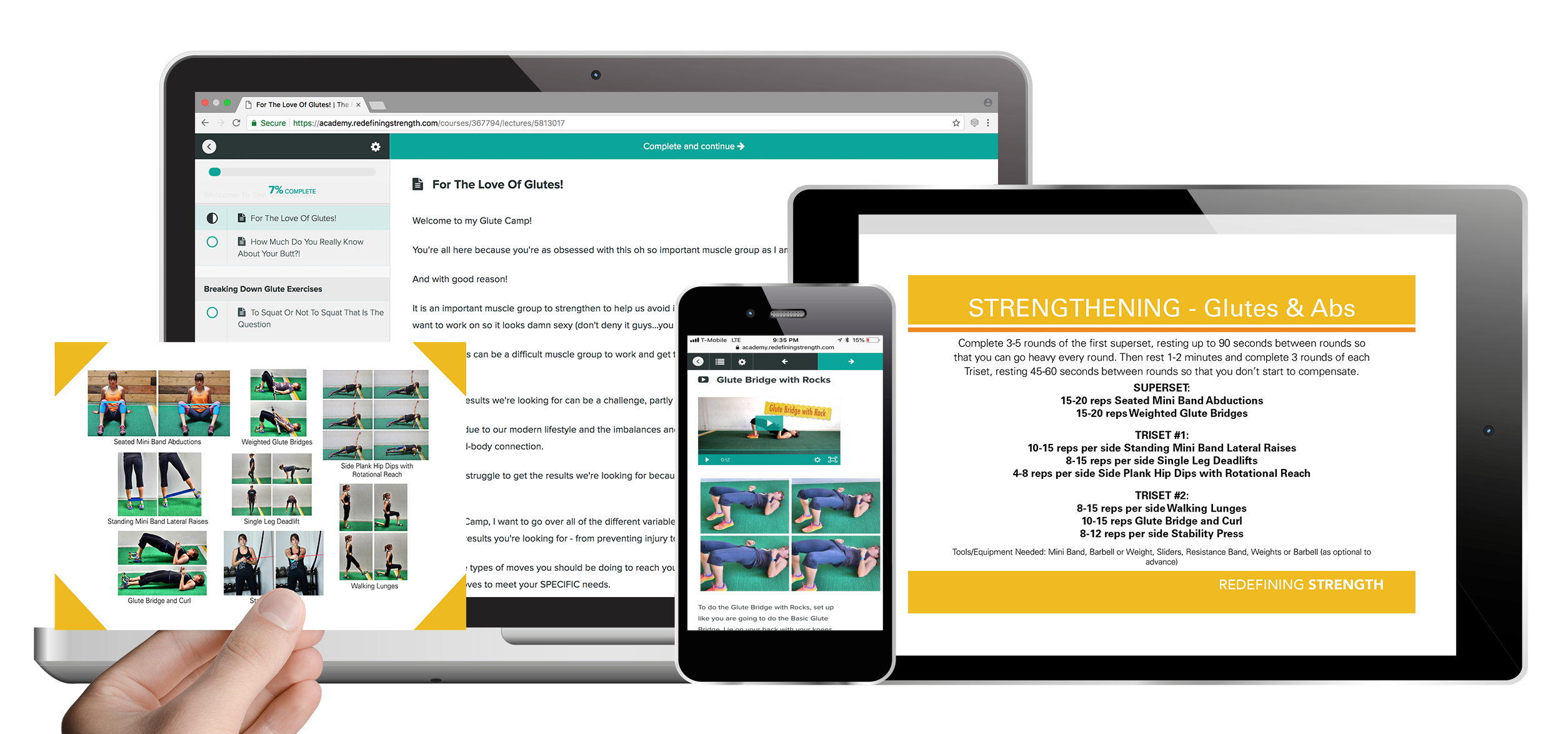
How much do you really know about your butt aka your GLUTES!?
Because the strength of our glutes not only influences our performance but also the health of basically our entire lower body as well as our backs!
Active, strong glutes can help us avoid injury and run faster and lift more.
The problem is they are often underactive due to our modern lifestyle and all of the sitting that we do. This has earned them the nickname of the SLEEPING GIANT.
But that doesn’t just mean we can add in a bunch of heavy compound movements to strengthen them and see results.
Often we first have to correct the imbalances and movement compensations that have led to them “falling asleep.”
This means not only activation moves for the glutes themselves, but even foam rolling and stretching to inhibit and lengthen muscles that may be taking over and hindering your glutes from working properly.
To properly train our glutes, it is key we understand a bit more about this oh so important muscle group first.
We call the muscle group “THE GLUTES,” and it is made up of three muscles – the gluteus maximus, the gluteus medius and the gluteus minimus.
And it’s important we understand the basic actions and functions of each of these three glute muscles because our training needs to address each of their unique needs, which doesn’t happen by us just “squatting for a better butt.”
As I breakdown how each works, you’ll also begin to understand why a diversity of movements and loads is so key.
All three muscles play an important role in not only injury prevention but our ability to lift more and run faster.
Let’s first start with the Glute Max…
The Glute Max:
The glute max is the LARGEST muscle in our body, made up of 70% Type I, or slow-twitch muscle fibers, and 30% Type II, or fast-twitch muscle fibers.
Why does this matter?
Because it is such a powerful and strong muscle, heavy loads and explosive movements are key to work it.
BUT because it is also made up of more SLOW TWITCH muscle fibers, a higher volume and more time under tension is also key.
This is why you need heavy compound lifts and explosive moves but also some of those isolation, activation, moves that create a PUMP.

As you consider using a variety of moves, you also need to think about the actions and function of the glute max and even what area of the glute max you want to work.
The glute max is our primary hip extensor and also a strong external rotator of our hip. It also posteriorly tilts the pelvis, which is why cueing a posterior pelvic tilt during certain glute moves can be key for higher glute engagement.
But specific areas of our glute max may work more during certain movements.
Ever say to your say, I want to work the top of my butt? Or the bottom of my butt?
Well, while it is all the glute max, upper and lower fibers can be recruited to different degrees with different movements.
Lower glute max fibers provide the greatest hip extension force. They can also contribute to horizontal abduction when there is heavier resistance.
On the other hand, upper glute max fibers can assist in abduction, when there is a heavy resistance.(1)
The glute max is also so essential to train properly because of the role it plays, directly and indirectly, in stabilizing the hip, knee, SI joint and even lumbar spine.
A weak glute max means instability and therefore INJURY!

Because of all of these different functions and actions, it is important you do activation moves to improve your mind-body connection and build stability while also using heavier loads to challenge this very strong muscle.
And the moves you choose to do can’t just be in one plane of motion to work all of the glute max fibers!
It is also important that you consider TEMPOS for your moves…and that doesn’t just mean making movements faster and more explosive.
Focusing on the eccentric can not only create more muscle tissue damage and lead to better strength gains and muscle hypertrophy, but it can also help you prevent injury.
Your glute max helps prevent unwanted hip adduction, internal rotation and flexion (aka knee valgus) when you land or decelerate.
Therefore, when you’re developing your glute training program, you want to even considering working your glute max by focusing on different parts of the muscle contraction.
So let’s say you are doing all of that….
You are training the different glute max actions and using moves to improve your glute max functioning. You’re using heavy loads combined with more isolated movements to create a pump. And you’re even including different tempos.
What if you’re still not fully seeing the results you’d like?
Well…it may be because you’re ignoring this OTHER very important, albeit SMALLER, glute muscle – the glute medius!
The Glute Medius:
If you want to improve the strength and function of your glute max, you need to work your glute medius!
So what does the glute medius do?
The glute medius is the primary abductor of the hip. Anterior fibers may internally rotate and flex the hip while posterior fibers externally rotate and may extend the hip.

This is why if you tend to feel your TFL or “hips” taking over during your lateral raise exercises, you may want to slightly keep your hip in extension and kick BACK and out to help activate your glute medius!
This glute muscle also stabilizes the hip, pelvis and femur in the frontal plane.
So if you were to stand on one leg, your pelvis would remain relatively level if your glute medius is strong (this is why glute medius strengthening is so important for you runners!).
Because of this function of the glute medius, it also plays an important part in maintaining optimal functioning of the muscles of your core, and proper joint movement of your hips, SI joints and lumbar facets.
A strong glute medius also helps you prevent knee pain, by stabilizing your femur. And because it stabilizes both the femur and pelvis, it helps maintain the ideal length-tension relationship of your hip musculature, which is why it can help your glute max function optimally!
Because of the function of the glute medius, adding mini bands to even moves like the squat can help activate both your glute medius and max better.

But it also makes it essential that as part of your activation exercises you do lateral and external rotation movements. Higher reps and lower resistances can help you start to really build hip stability and strengthen your glute medius.
Now what about the glute minimus? Doesn’t it work with the glute medius and therefore doesn’t it also need to be strengthened to help the glute max perform optimally?
The Glute Minimus:
So the glute minimus is technically a glute muscle, and while it assist in abduction, it is important to note that it actually acts much more like the TFL or Tensor Fasciae Latae, also assisting in hip internal rotation and flexion.
So if you’re targeting your glutes because you’re working to alleviate injuries and prevent them from returning, the glute minimus is actually a glute muscle you may need to relax and STRETCH because it is overactive and shortened unlike the glute max and medius that will need to be activated because they are often underactive and overly lengthened!
It is important we understand this point, and the different exercises that may need to be implement, because when we begin to work to strengthen our glutes, part of getting the right muscles working will be us FEELING them working and knowing when other muscles are compensating!
You may now be thinking, “I just want to train my butt. Why do I need to know all of this?”
It is important to understand these basics about our glutes so that, when we combine moves together, we understand why something may or may not work and we use the moves that truly address our needs.
We can also begin to see how using both heavy lifts and those silly lateral raises may be important. How slowing down movements may help. And even why it isn’t just about squatting or deadlifting all day but also about moving in every direction if we want to get results.
Understanding the basics about our glutes also starts to help us gain an appreciation for all of the different components, such as foam rolling, stretching, activation and strengthening, that go into developing a proper glute training routine.
So now that you have a bit of background about all three glute muscles and their actions and functioning, let’s talk about those glute moves and which ones you should be doing for results!
This has been a SNEAK PEAK inside my Glute Camp which not only explains the WHY behind glute training (and modifications of moves for every level and injury )BUT also includes PHYSICAL WORKOUT CARDS to allow you to design over 700 workouts based on your needs!
Ready to join the Glute Camp? Learn more HERE!

